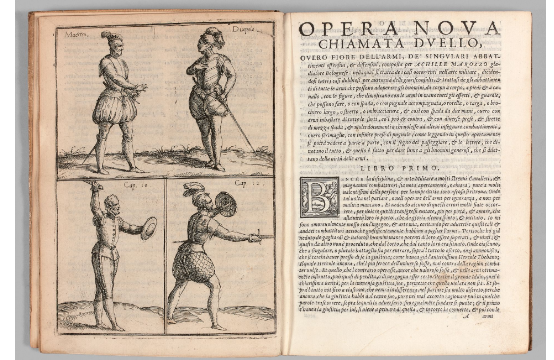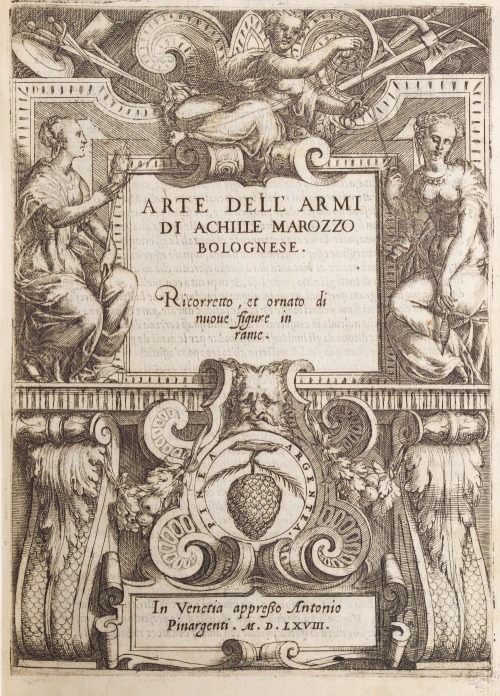Only a few books attract the interest of collectors for centuries. One of those is Achille Marozzo’s “Arte delle Armi”, a comprehensive treatise on swordsmanship that reflects the martial arts practices of the Renaissance period.
Initially printed in 1536 (in Modena in aedibus venerabilis D. Antonii Bergolae Sacerdotis) it got two more editions: in 1550 (in Venice, per Giovanne Padovano ad Istantia de Marchior Sessa) and 1568 (in Venice, appresso gli heredi di Marchio Sessa). Again in Venice, Antonio Pinargenti edited a corrected and updated edition in 1569 (although the titlepage reads 1568) in which, in addition to an adaptation of the text and the structure of the chapters, the woodcuts were replaced by copper engravings by Giovanni Battista Fontana based on designs by Achille’s brother Giulio. This is the copy Hermes Rare Books presents.
Some of the characteristics of Marozzo’s work include:
1.Comprehensive Coverage: “Opera Nova” provides a comprehensive exploration of swordsmanship, covering various weapons and combat scenarios. It includes sections on single-handed sword, two-handed sword, sword and dagger, polearms, wrestling, and even mounted combat
2.Systematic Structure: The treatise is organized into distinct sections, each focusing on a specific weapon or technique. This systematic structure allows for a step-by-step progression in learning and practicing swordsmanship.
3.Detailed Descriptions: Marozzo’s text offers detailed descriptions of techniques, guards, and footwork. It provides clear instructions on how to execute specific actions, including attacks, parries, and counters.
4.Illustrations: “Opera Nova” is accompanied by numerous illustrations that visually depict the techniques and positions. These illustrations help readers visualize the movements and aid in understanding the instructions.
5.Pedagogical Approach: Marozzo’s treatise is designed with a pedagogical approach in mind. It provides a progressive learning path, starting with foundational principles and gradually advancing to more complex techniques. This approach makes it accessible for both beginners and experienced practitioners.
6.Tactical Considerations: Alongside the technical instructions, Marozzo also emphasizes tactical considerations in combat. He discusses topics such as timing, distance, feints, and strategies, offering insights into the mental aspects of swordsmanship.
7.Historical Context: “Opera Nova” reflects the martial arts practices of the Renaissance period. It provides historical insights into the fighting techniques, equipment, and mindset of swordsmen during that time.
These characteristics make “Opera Nova” a significant work in the field of historical European martial arts, offering a comprehensive and structured approach to swordsmanship while providing valuable insights into Renaissance combat techniques.


